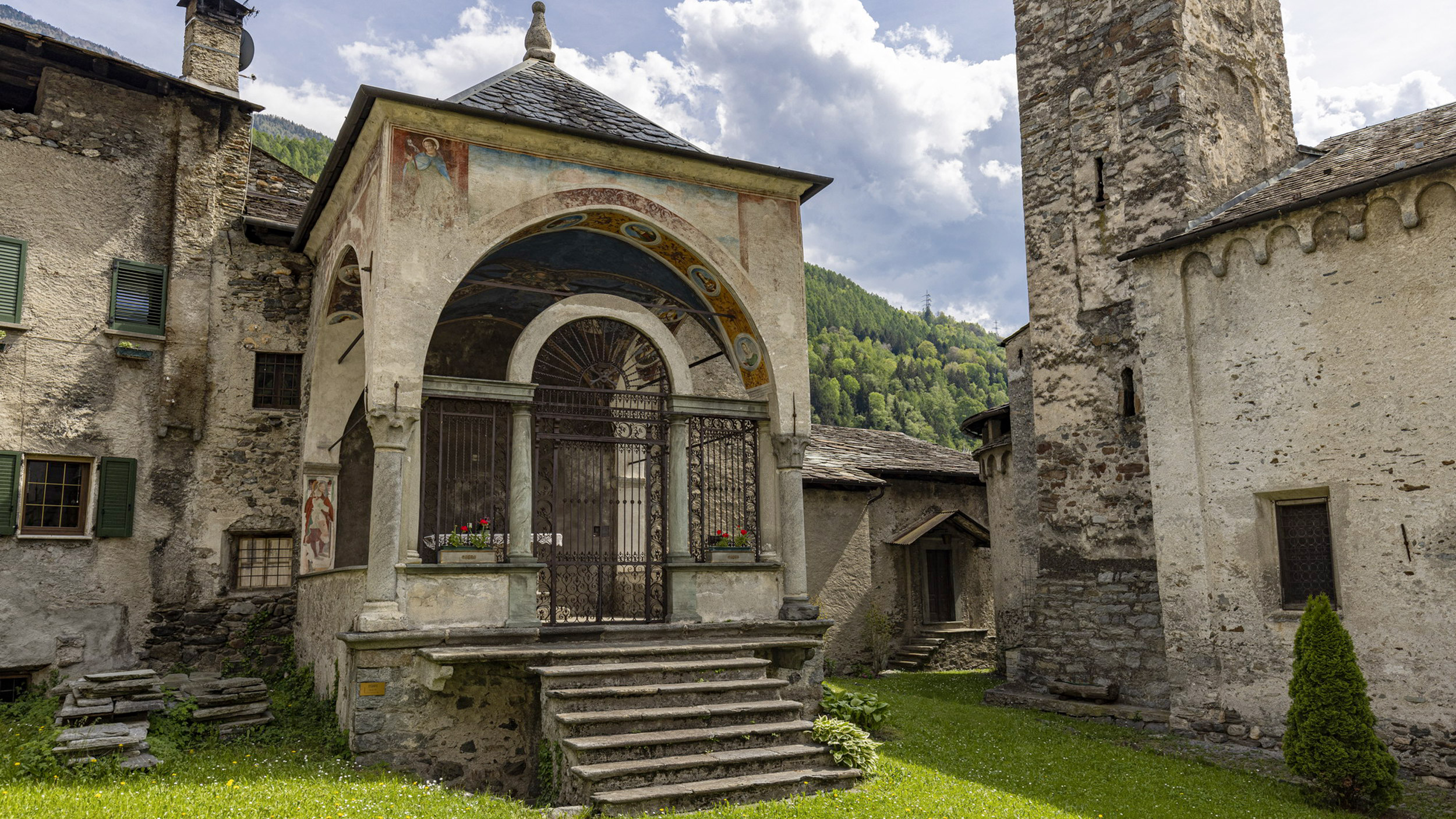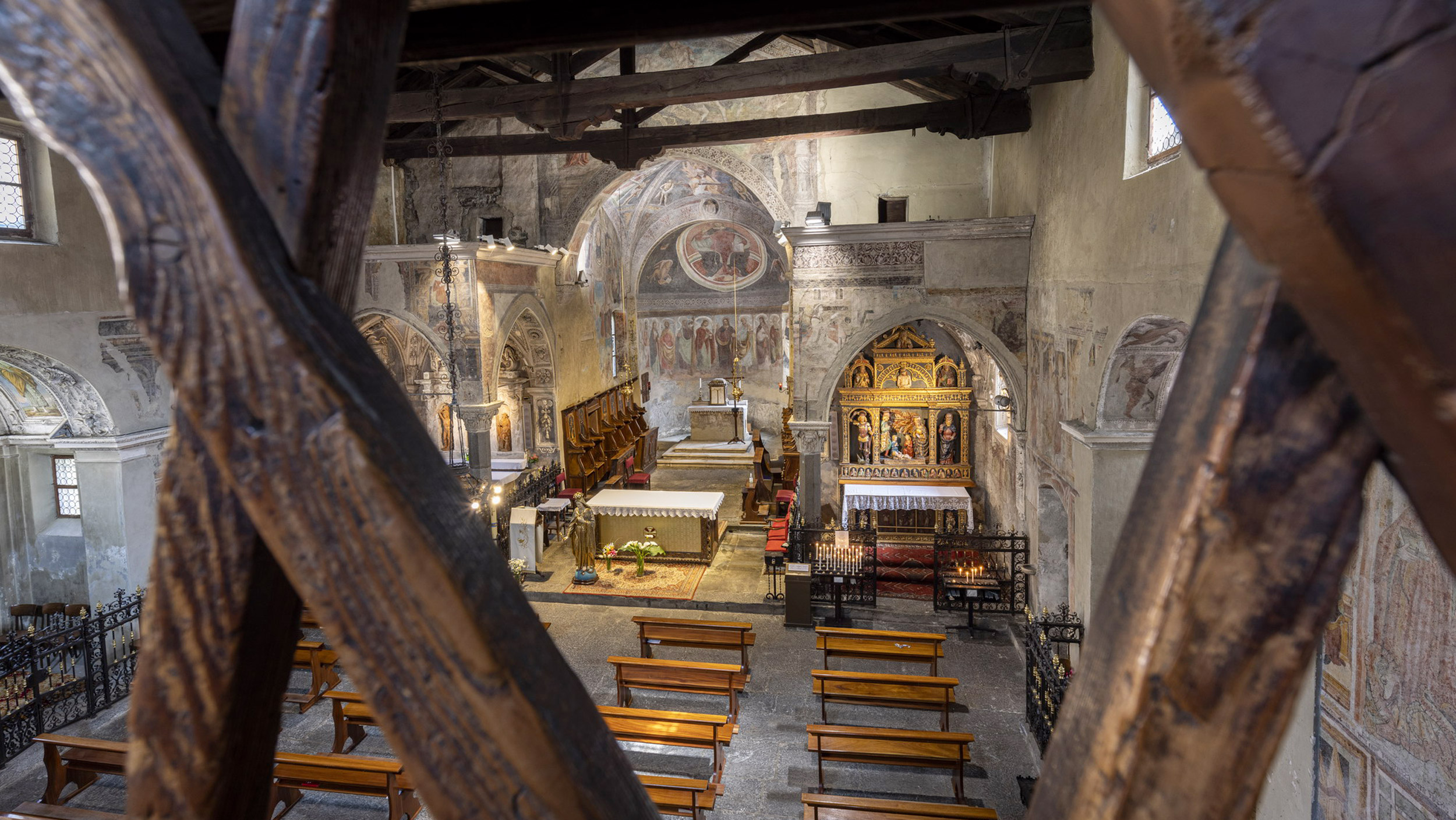Via S. Giorgio, 2, 23033 Grosio SO
Grosio is still characterized by its lively town life; the main street is lined with shops and cafés which have always been the favorite gathering places for the locals (“Grosini”).
You can get a taste of how things used to be in town by finding the small piazza tucked away behind the Town Hall, where a fountain and old lavoir now act as a traffic island. This was where the heads of families used to meet, surrounded by buildings that show their venerable age, such as the entrance of an old workshop shaped like an upside-down L and the old cemetery wall.
Rebuilt in the late-15th century, the church of San Giorgio is one of the few religious buildings in Valtellina untouched by baroque reworkings; in the seventeenth century the decision was made to build a new church at the edge of town rather than renovate the existing one. The large nave still features its beautiful wooden roof trusses and two chapels under aediculae. The platforms over the chapels were once balconies for the faithful accessible via wooden galleries (now removed) connecting to the balcony on the counter-façade in an ingenious system of elevated walkways designed to increase the capacity of the church.
The limited natural light in the church enhances its meditative atmosphere. Once your eyes have adjusted to the half-light, you will find the faces of saints molded in stucco or frescoed on the walls, the old baptismal font transformed into a basin for holy water, the Renaissance stained glass, and the Deposition (c. 1590) by Cipriano Valorsa, a painter from Grosio in very high demand in Valtellina who lived to a ripe old age. Visit the main chapel to see the Stories of Saint George by the painter Andrea De Passeris from Como above the early 16th-century choir stalls.
As regards Marian devotion, the most meaningful space is the chapel of the Virgin, embellished by a powerful confraternity who were able to bring in the most innovative artists of the day. The wooden altarpiece is by the Milanese artist Pietro Bussolo, assisted by De Passeris for the colors and gold leaf (1494). On the wall, in spite of the compromised condition of the intonaco, you can still admire the elegant fresco of Virgin of Mercy and Angels (1498), the work of a painter clearly inspired by Bramante.
A bit further down the road, your eye will be greeted by the gardens of Villa Visconti Venosta, a Renaissance residence that has now been transformed into a museum. Next to it is the parish church of San Giuseppe with a superb façade facing the Dosso dei Castelli and the Rupe Magna.








